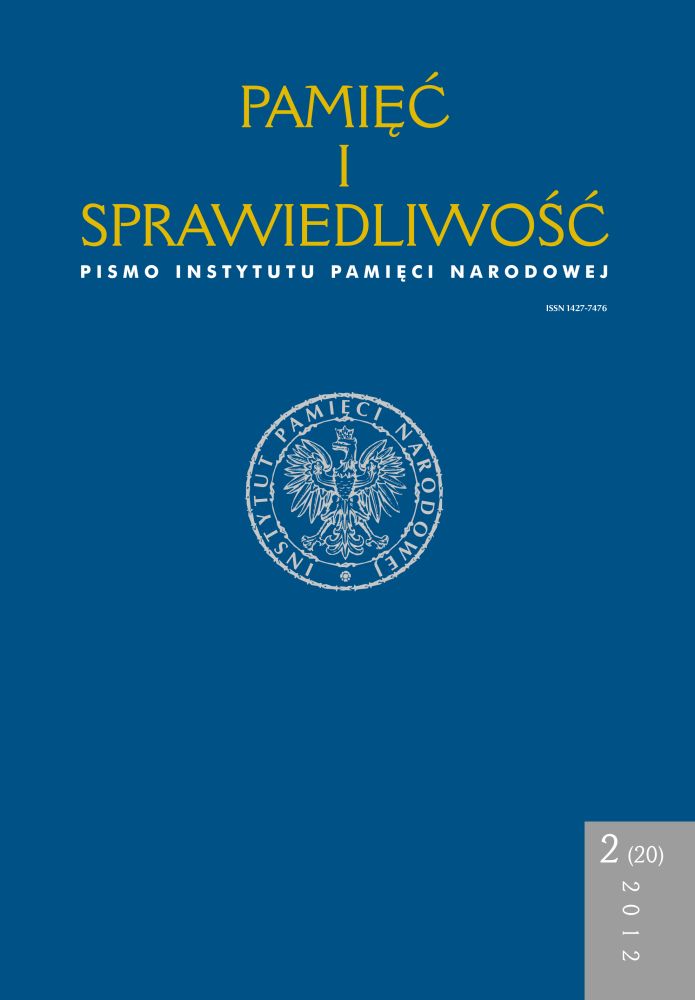Świętowanie faszyzmu i zbrodni wojennych w Edmonton. Mit polityczny i kult Stepana Bandery w multikulturowej Kanadzie
Celebration of fascism and war crimes in Edmonton. The political myth and the cult of Stepan Bandera in multicultural Canada
Author(s): Grzegorz Rossolinski-LiebeSubject(s): History, Social Sciences, Political history, Recent History (1900 till today)
Published by: Instytut Pamięci Narodowej
Keywords: Stepan Bandera; Ukrainian diaspora; Edmonton; political myth; political cult
Summary/Abstract: This article deals with the political myth and cult of the Ukrainian radical right politician Stepan Bandera in the Canadian city of Edmonton. It explores how certain elements within Ukrainian immigrant groups tried to combine the policies of Canadian multiculturalism with the anti-communist rhetoric of the Cold War in order to celebrate the ultranationalist and fascist politician Stepan Bandera as a part of the struggle against the Soviet Union and for an independent Ukraine. Bandera’s myth and cult emerged in Canada and in several other places around the globe after Bandera’s assassination on 15 October 1959 in Munich. Peoplewho began commemorating Bandera and celebrating Ukrainian fascism came to Edmonton in the late 1940s and early 1950s from the camps for displaced persons in Germany and Austria. They escaped from Ukraine in 1944 together with the withdrawing German army. This group of people consisted of Nazi collaborators, members of the Organization of Ukrainian Nationalists, partisans from the Ukrainian Insurgent Army and soldiers of the Waffen-SS Galizien Division. A certain number of them were involved in war criminality and in the aryanization of Jewish property. During the Cold War they stayed in countries such as Argentina, Austria, Brazil, Canada, Great Britain and the United States of America, where they cultivated not only the Bandera cult but also myths and cults of other Ukrainian war criminals like Roman Shukhevych and allowed the organization of their political and cultural lives as well as work at academic institutions to be handled by such Nazi collaborators and convinced antisemites as Volodymyr Kubiiovych. The myth and cult of the providnyk Bandera was perhaps the most persistent one but it was certainly not the only one.Investigating the political myth and cult of Stepan Bandera, I firstly provide a short theoretical introduction to the political myth. Secondly, using the method of “thick description” and the critique of ideology, I analyze how some elements of Ukrainian communities celebrated Bandera in Edmonton and several other Canadian cities under the influence of his political myth. Analyzing the myth I concentrate on the process of commemoration which mainly consisted of a requiem mass (panakhyda) and of commemorative gatherings during which Ukrainian radical right individuals declaimed poems for the providnyk, sang OUN or UPA songs for him or performed diverse dances in folklorist costumes or uniforms. Analyzing the Bandera cult in Edmonton I tried to elaborate on how the politics of multiculturalism that were introduced in Canada in 1971 corresponded with the neo-fascist tendencies of the Ukrainian radical right groups. Furthermore I tried to find out why Ukrainian radical right émigrés welcomed the politics ofmulticulturalism and how they used them for the process of cultivating their radical right and neo-fascist cultural activities.
Journal: Pamięć i Sprawiedliwość.
- Issue Year: 20/2012
- Issue No: 2
- Page Range: 453-478
- Page Count: 26
- Language: Polish

